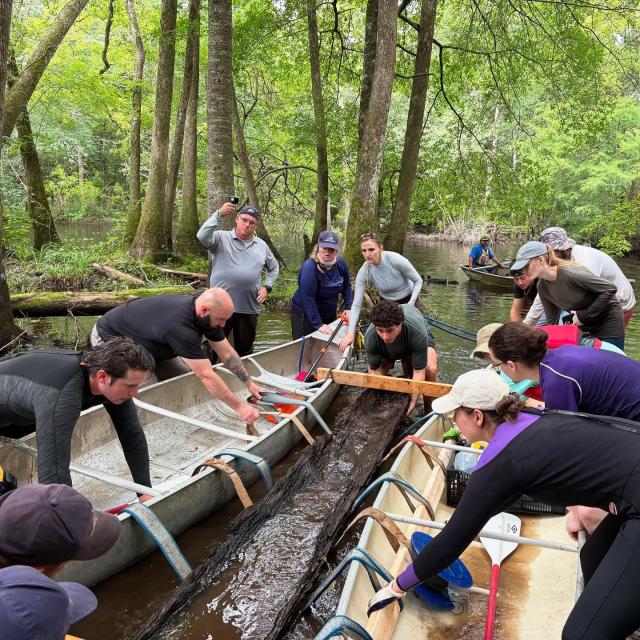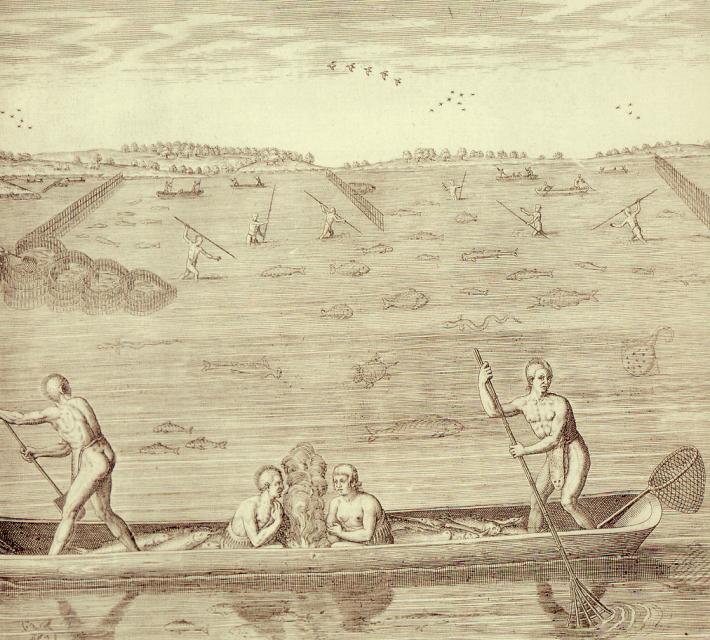Author: Kaytee Smith
In the slow-moving waters of eastern North Carolina, history has a way of surfacing—sometimes quite literally. Earlier this month, a prehistoric dugout canoe emerged from the South River near Autryville, North Carolina, appearing not as a relic in a museum case but bobbing gently in the water, as if waiting to be reclaimed.
Crafted from a single tree trunk and measuring just over 12 feet long, the canoe is believed to be centuries old. It was spotted by a local outdoorsman who did more than take a second glance. He contacted the Coharie Tribe, who then notified the N.C. Office of State Archaeology. Soon, a collaborative recovery effort was underway with the NC Department of Natural and Cultural Resources and the NC American Indian Heritage Commission. The canoe was carefully lifted from the river and will be transferred to a secure location for preservation.
This remarkable find reminds us that the waterways of eastern North Carolina are more than scenic. They’re historic. For Indigenous peoples, rivers, creeks, and sounds were highways, hunting grounds, trade routes, and gathering places. In the dense swamps and forests of the Coastal Plain, water travel wasn’t optional. It was essential.

Long before Europeans arrived, Native communities used dugout canoes like the one recently recovered. Unlike the lightweight birchbark models known in the northern U.S. and Canada, these canoes were carved, burned, and hollowed from large trees such as white cedar, cypress, or poplar. They were heavy, stable, and long-lasting, some large enough to carry twenty or more people and their cargo. They were tools of both peace and war, as important to daily life as the land itself.
The 1580s English explorer Arthur Barlowe marveled at how the people shaped massive logs into vessels using fire and shells. His fellow chronicler Thomas Harriot offered more detail, noting the use of soft but strong woods like “rakiock,” likely tulip poplar or white cedar. Their writings, along with the images published by Theodor de Bry, depicted Native artisans hollowing out trees with fire, protecting certain areas with wet clay, and fanning the flames to guide the burn. It is a method still admired today for its ingenuity.

The canoe recovered in Autryville may have been left behind hundreds of years ago, its purpose long fulfilled. But its presence offers a powerful symbol as we prepare to commemorate America’s 250th anniversary. It connects us to the deep time of this land, to the people who shaped it, navigated it, and made their lives on its banks long before the founding of the United States.
As America 250 NC marks the countdown to 2026, this canoe rising from the river is more than an archaeological discovery. It is a moment of reflection. It reminds us that North Carolina’s story didn’t begin in 1776. It has always been a story of many voices, many vessels, and many currents converging.

